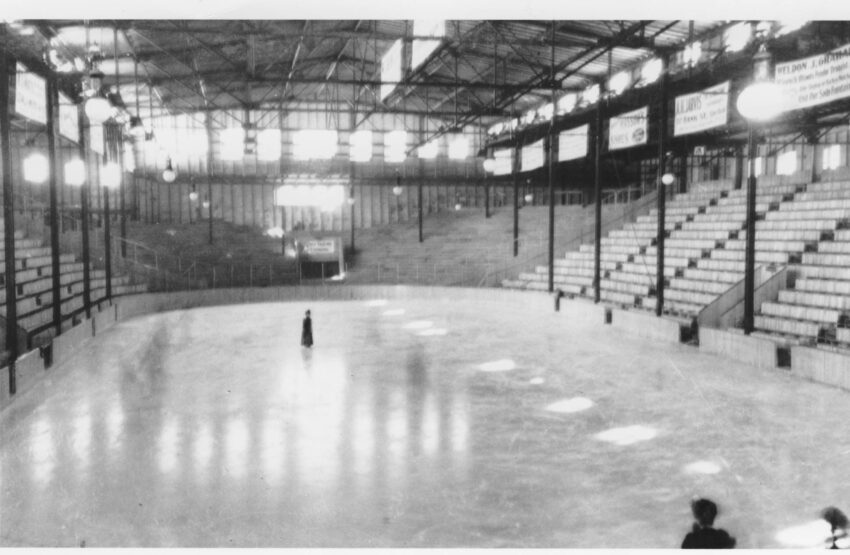On August 11, 2025, it was announced that Capital Sports Development Inc. had signed an agreement with the National Capital Commission to purchase an 11-acre parcel of land at LeBreton Flats. On a portion of that 11-acre parcel, Capital Sports has said it will build a new home arena for the Ottawa Senators hockey club.
While a Lebreton Flats arena would be the Ottawa Senators’ third home building since returning to the National Hockey League in 1992, the original Senators had an association with seven different rinks in the capital between 1883 and 1934. Like today’s Senators, the original team had to consider factors such as cost (the old Senators were renters in six of their seven rinks), location, arena size and seating capacity, and overall fan experience. There was, however, one important consideration, explained in Chapter Four of Win, Tie or Wrangle, that burdened the original Senators that (hopefully) is not of concern to today’s team:
Natural Ice or None at All: Praying for Cold Weather
“Ottawa’s winter sportsmen sought warmth but prayed for cold. Without the former they would be too numb to compete; without the latter there could be no competition. The hockey fraternity wore roll collar sweaters of thick wool, knitted for some teams by lady supporters. The dressing rooms, in otherwise frigid natural-ice rinks, had to be heated, even if it meant teams bringing their own burlap sacks of coal for the stove. Body heat could be preserved by insulating apparel. And heat could be generated by combustive devices. But the requisite cold temperature to produce and preserve the playing surface was left to the whim of a mercurial Mother Nature – at least in Canada.
By the early 1890s, covered rinks of natural ice had sprung up everywhere. Rink operators and hockey teams depended on consistently below-freezing temperatures for revenues and the completion of schedules. For the most part their needs were met, but rare was the winter when there was not a sudden thaw causing annoying postponements and cancellations. In warmer climes, mechanical refrigeration by means of vapour-compression heat transfer had been experimented with and successfully applied in the meat packing and brewing industries. With varying degrees of success, artificial ice rinks began to appear in New York, and in London, Manchester and Southport in England in the 1870s. Notable among these were the Southport rink, which saw ten years of service until 1889, and the 6,000 square foot surface that opened in New York’s Madison Square Garden in 1879.
Entrepreneurial Ottawa of the 1890s had certainly heard of mechanical refrigeration, but since the technology was expensive, largely experimental and of limited application, local businessmen were in no hurry to embrace it. Rink operators such as Edwin and William Dey simply accepted nature’s rhythm, viewing hockey and skating as seasonal sports that inevitably followed football in the fall and preceded lacrosse and baseball in the spring. They saw no reason to artificially prolong the ice sports through the costly technique of mechanical refrigeration and were prepared to accept the occasional mid-season mild spell”.
The Seven Rinks of the old Ottawa Senators
Five rinks served as the home base for the Ottawa Hockey Club between 1884 and 1934. A sixth rink, the Aberdeen Pavilion, was used on an occasional basis while in the very beginning the team made use of the Royal Rink, although only for practicing and never for an official game. Only the seventh and last of the rinks, the Ottawa Auditorium, had refrigerated ice. For the others it was natural ice or none at all.
Royal Rink:
The Ottawa Hockey Club held its first ever practice on March 6, 1883, at Fred Fooks’ skating rink, soon after renamed the Royal Rink. Located on Slater Steet just east of Elgin, it had known better times, having been in operation since 1868 as the Ottawa Skating and Curling Club. And while they had access to a proper rink, all the Ottawa Hockey Club could do was practice there, given that there was no local competition to play against. What competition did they have had been against clubs in Montreal.
Other than a few so-called friendly matches against local players, the Hockey Club never played a competitive game at the Royal.
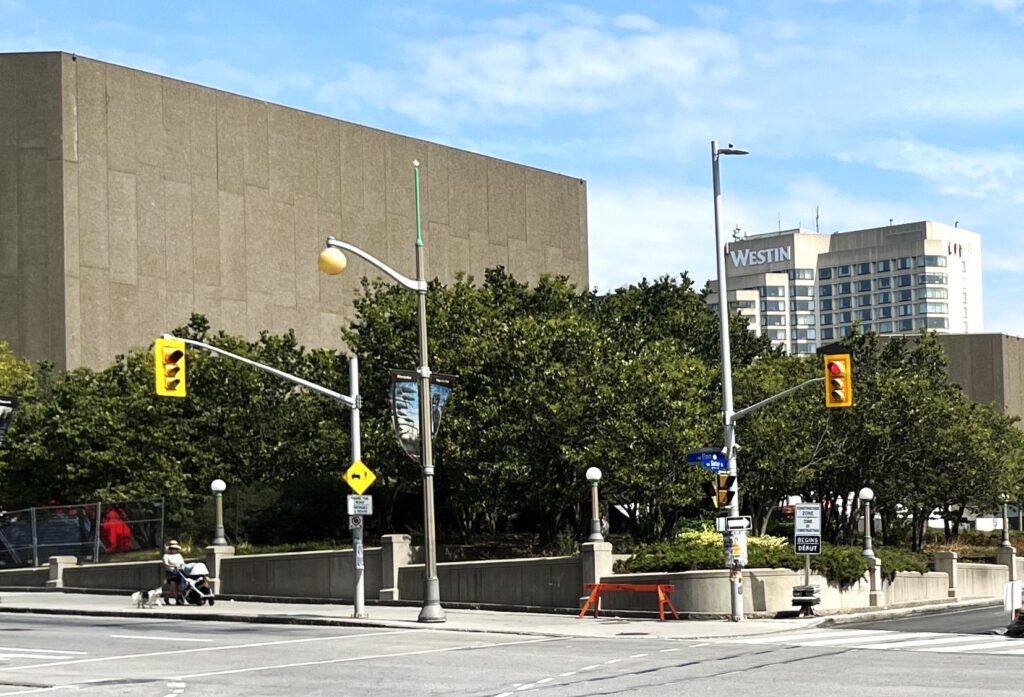
The Royal was for a long time the only skating rink in Ottawa. Its manager, Fred Fooks, made many improvements, including the installation of electric lighting. The rink was located on the north side of Slater Street just east of Elgin.
Dey’s Skating Rink:
Not far away from the Royal, but on the east side of the Rideau Canal near where the Laurier Bridge now stands, stood the first of what would be three Dey’s brothers’ arenas. The Dey brothers were Edwin Peter “Ted” Dey and William Ernest Day. Their father, Joseph Day, a prominent Ottawa businessman known mostly for his boat works, sought to cash in on the new fad of ice skating by adjoining an indoor ice rink to one of his boat sheds. Joseph put his two sons in charge of the rink operation and thus began a long association between the Dey family and indoor rinks and the sport of hockey.
Opened December 20, 1884 the Dey’s Skating Rink, as it was called, was a striking building 200 feet long and 99 feet wide with a high curved roof. Inside was a rectangular natural ice-skating surface 150 feet by 60 feet. The rink boasted heated dressing rooms and was lit by electric light.
The Ottawa Hockey Club used the rink as the centre of its operations from 1887 to 1890. And while the hockey club had moved to the Rideau Rink in 1890, the Dey’s Skating Rink remained in operation until 1895 before making way for the tracks and depot of the Canada Atlantic Railway.
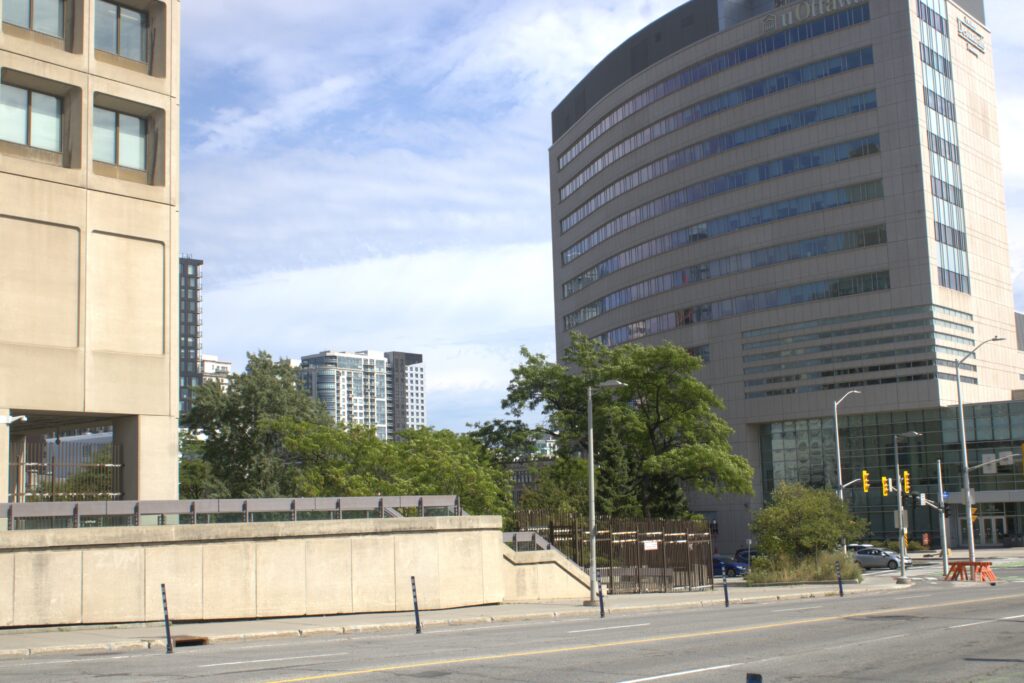
The Dey’s Skating Rink was adjoined to the Dey Bros. boat works’ business. The Ottawa Fire Insurance Plans (January 1888, revised January 1901) depict the Dey Bros boat works and sheds, and although unmarked as such likely the rink too, as being here on the east side of the Canal where the Laurier Bridge now stands.
Rideau Rink:
The Rideau Rink was located at Theodore Street (now Laurier Avenue) and Waller Street in Sandy Hill. Built as an indoor skating and curling facility, it was also used for the sport of hockey and later for figure skating. It was a long narrow building designed by Ottawa architect James R Bowes that cost $10,000 to build.
The Ottawa Fire Insurance Plans (January 1888, revised January 1901), show the building in an L shape design. The 150X66 foot skating and hockey sheet was accessible directly from the Theodore Street entrance while at the back, giving the building an L shape, was the 143X70 foot curling sheet of ice. Both ice sheets had squared ends and low boards.
The Rideau Rink was formally opened by Lord Stanley on February 1, 1889, and quickly became a hub for the capital’s elite.
The Ottawa Hockey Club played here until 1897 paying twenty dollars rent per season, plus half of gross proceeds from matches, after advertising (an arrangement not always in the Club’s favour).
The Rideau Rink should not be confused with the seasonal outdoor Rideau skating rink that was and still is on the grounds of Rideau Hall. Skating carnivals drew hundreds of costumed citizens to indoor and outdoor rinks, including the surface set among pines and maples on Rideau Hall’s rolling grounds.
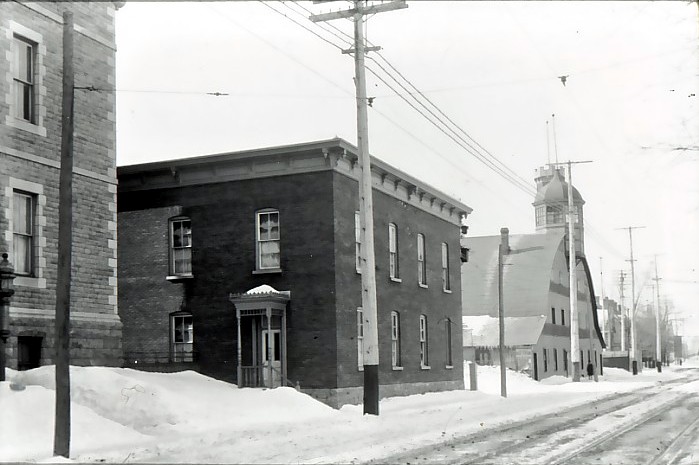
The Rideau Rink – the building with the curved roof and centre cupula on the right – was the home ice of the Ottawa Hockey Club from 1890 to1896. LIBRARY AND ARCHIVES CANADA PA42366
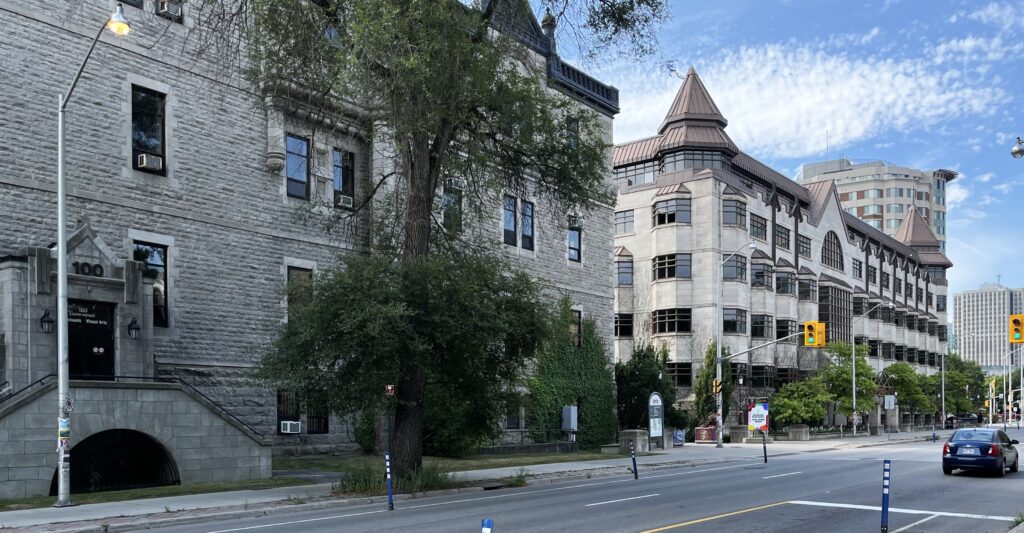
The Rideau Rink was located at Theodore Street (now Laurier Avenue) and Waller Street in what is now part of the University of Ottawa campus.
Dey’s Rink:
Located at Ann Street, now Gladstone Avenue, and Bay Street, was the Dey brothers’ second rink. The Dey’s Gladstone Rink was Ottawa’s first meant specifically, though not exclusively, for hockey. While their new rink was located on the southern fringe of the city’s populated area, the brothers gambled that being on a line of the new Ottawa Electric Railway’s streetcar system would be enough to draw hockey fans to the rink. The gamble paid off. From the grand opening on December 17, 1896 to the end of the 1907 hockey season, skaters and hockey fans alike streamed to the Dey’s Rink arriving by foot, electric railways, and horse-drawn sleigh.
The rink served the hockey club well over the years. The Ottawas, as they were known then, played their first game in the building on January 9, 1897, winning 4-1 over Shamrocks of Montreal. It was in this rink on March 10, 1903, that Ottawa defeated the Montreal Victorias to bring the city and the team its first Stanley Cup. And it was here where the Silver Seven, as they were then nicknamed, walloped the Dawson City Klondikers 9-2 and 23-2 in a two-game challenge series for the Stanley Cup.
As for the facility itself, it had a natural ice surface that measured 80 by 200 feet and was reported to be the largest in Canada. Spectator capacity was said to be 2,500. Spectator galleries were at either end of the ice surface and a single row of elevated seats ran the full-length of the south side. Maintaining ice at the rink was dependent on outside temperatures and thus a constant struggle. There were no boards then, only a one-foot rim around the icesheet. Often the ice was covered with water. Newspaper accounts tell of spectators being splashed because of the sudden spray stops of skates and from sticks trying to connect with a puck that refused to slide. The building was not ventilated and so tobacco often filled the rink with a smokey haze. In a January 11,1905 commentary, the Ottawa Citizen asked fans to “refrain from the use of the tobacco in the building” arguing that “If there is anything really detrimental to an athlete’s staying powers it is to have his lungs filled with the nauseous, chocking fumes of tobacco…”
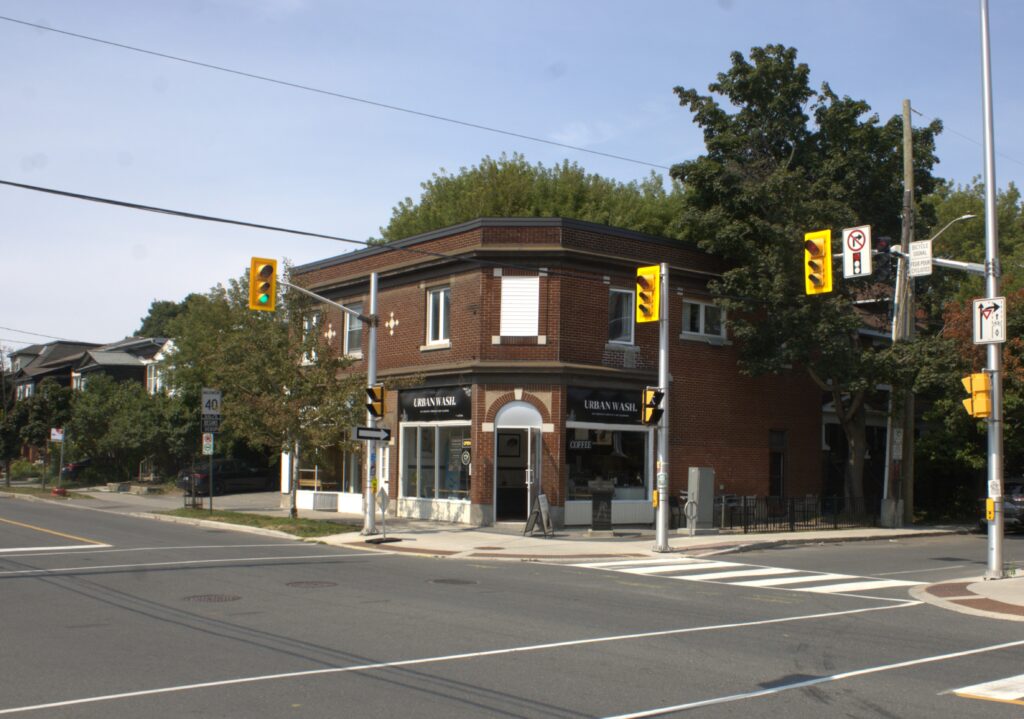
The second of the three Dey’s rinks was located here on the northwest corner of Bay Street and Gladstone Avenue. The rink served the team well from 1893 to 1907.
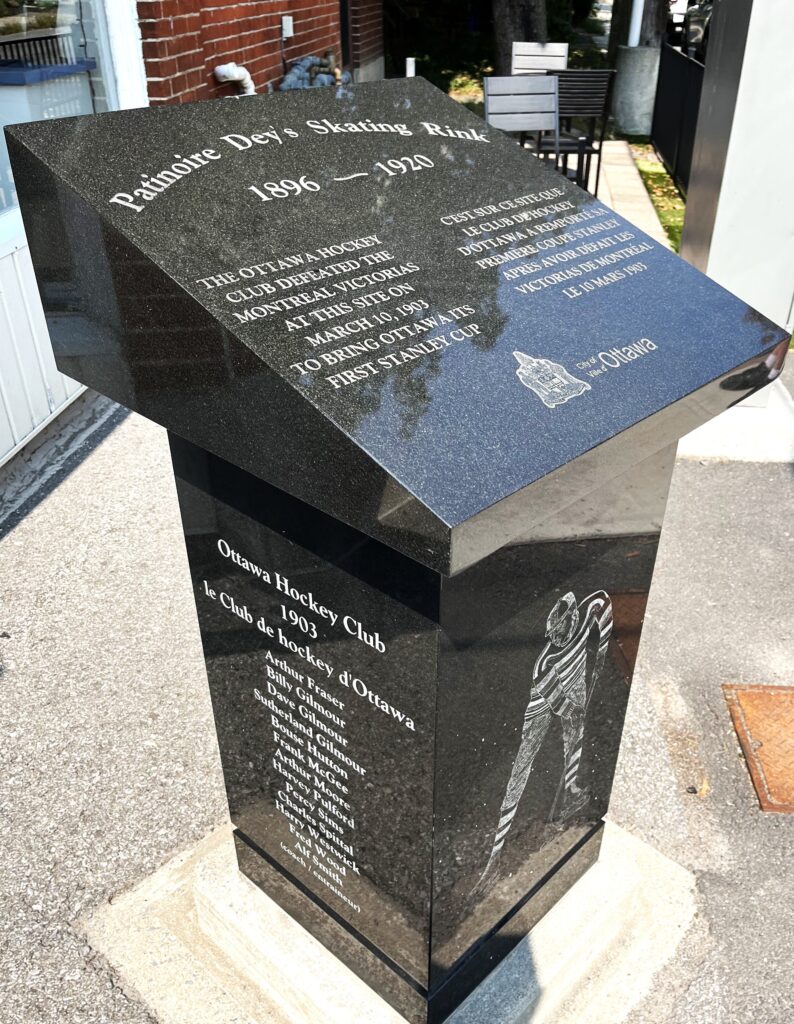
It was at this site that the Ottawas won their first Stanley Cup in 1903, an achievement marked today with a monument. The rink was reduced to rubble in a 1920 fire.
Aberdeen Pavilion:
As the 1904 hockey season approached, the Ottawa Hockey Club became concerned about the limited capacity of their home arena, the Dey’s (Gladstone) Rink. The Club anticipated that, as Stanley Cup champions, they could expect an even greater demand for tickets.
Team president Percy Buttler approached the Central Canada Exhibition Association with the idea of converting its agricultural hall, the Aberdeen Pavilion, into a hockey rink. An arrangement was worked out whereby the Ottawas would pay five hundred dollars towards the fitting up of the building and the Association would take forty per cent of gross receipts. The Association would provide dressing rooms, a new entrance, banks of seating to accommodate 4,000 spectators, lights, ushers, ticket sellers, and turnstile men.
The move to the Aberdeen Pavilion was not entirely a success. It quickly acquired a reputation as a damp and drafty building. And people complained about the long, dark walk down the unplowed road from the Bank Street streetcars to the Pavilion’s ticket wicket. Nonetheless Ottawa as the 1903 Cup holders defended four Stanley Cup challenges in the Aberdeen Pavilion between January and March of 1904 defeating the Winnipeg Rowing Club, Toronto Marlboros, Montreal Wanderers, and finally a team from Brandon.
Stung by the loss of their premier attraction, the Dey brothers added more seats to their arena and offered better terms for the following season prompting the Ottawas to return to the brothers’ Gladstone Avenue rink to play their home games.
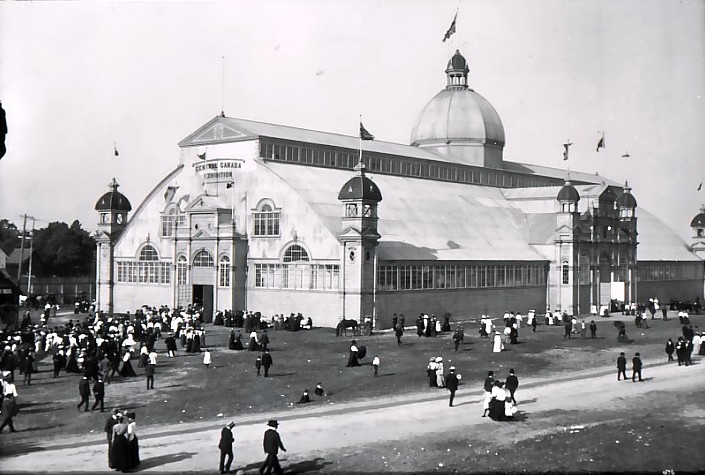
The Aberdeen Pavilion at Lansdowne Park opened in September of 1898 as an agricultural exhibition hall. It was later converted for skating and hockey in winter. LIBRARY AND ARCHIVES CANADA PA8938.
Dey’s Arena:
The third and last of the Dey brothers’ rinks was located on the north side of Laurier Avenue opposite the Cartier Square Drill Hall, thus returning the Ottawa Hockey Club to the centre of the city. A massive utilitarian looking building, some said it looked like a warehouse, it was considered the largest rink in Canada.
Known as the Dey’s Arena, the main entrance and rotunda were on Laurier Avenue, but fans could also enter directly off Slater Street at the canal basin. It had 4,500 seats with room for 2,500 standees. The dressing rooms, restrooms, smoking room and lobby were heated by steam. It had a natural ice rink, meaning that without cold weather there was no skating or hockey played.
The Senators played their first game in the new arena on January 11, 1908, in front of 7,500 fans, the largest to that time ever to view a hockey match in Ottawa. As a sign of things to come, Ottawa beat the Montreal Wanderers handily that night 12 to 2. With the Dey’s Arena as their home base, the Senators would go on to win Stanley Cups in five of the next 15 years.
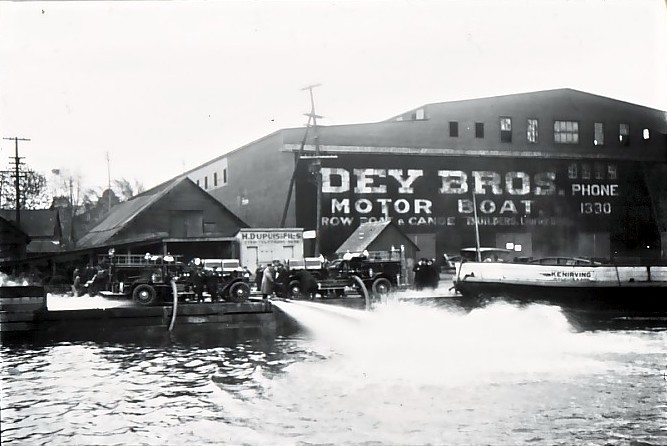
This view is of the rear of Dey’s Arena, photographed from the then-existing Rideau Canal turning basin. True to form, the Deys proved themselves to be savvy marketers, exploiting the view to promote another one of their businesses. LIBRARY AND ARCHIVES CANADA PA24841.
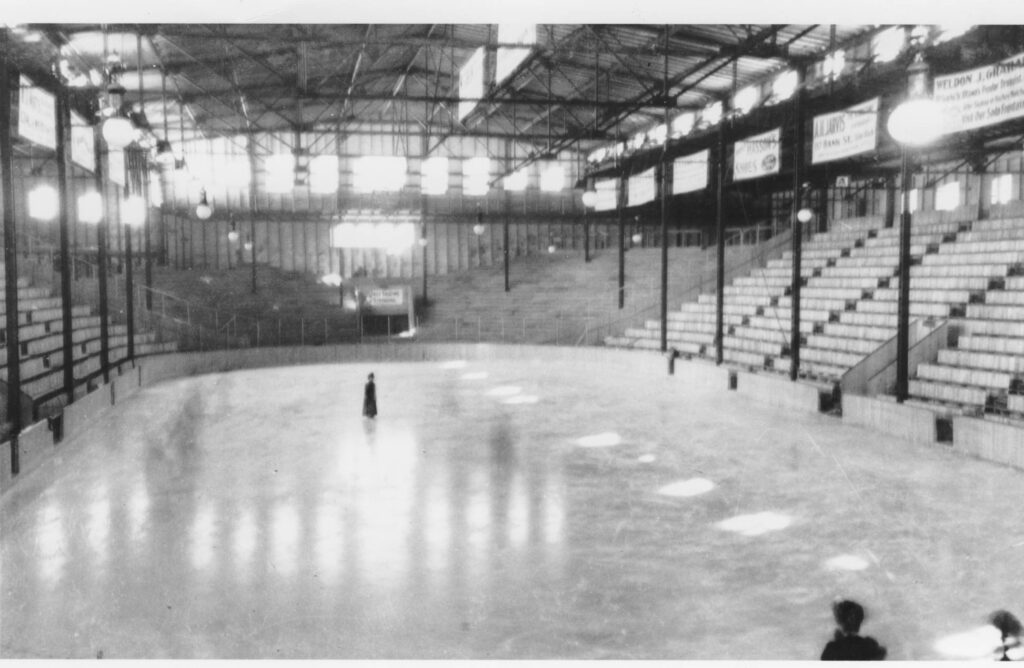
A rare interior view of the newly built Dey’s Arena on February 10, 1908, a month after the Senators’ home opener against the Montreal Wanderers. With seating for 7,500, the spacious arena was testament to hockey’s stature in the capital. LIBRARY AND ARCHIVES CANADA PA203558.
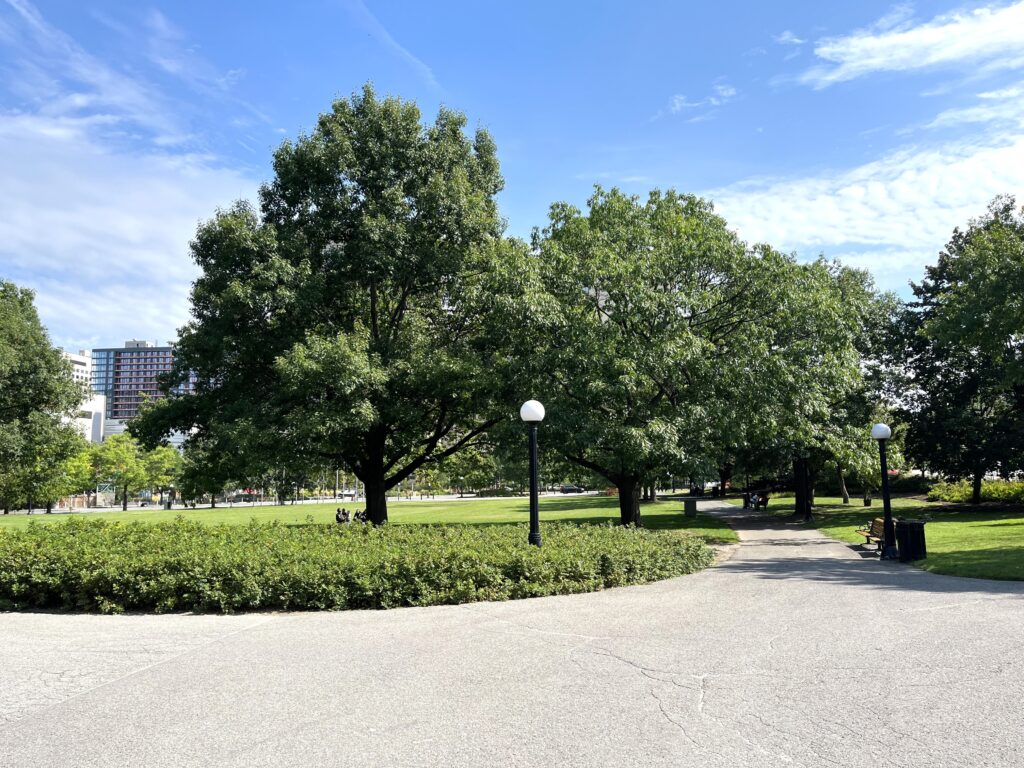
The third and last of the Dey brothers’ rinks was located on the north side of Laurier Avenue opposite the Cartier Square Drill Hall. The main entrance and rotunda were on Laurier Avenue, but fans could also enter directly off Slater Street at the canal basin.
Ottawa Auditorium:
The Senators final arena was located at the corner of O’Connor Street and Argyle Avenue was a considerable upgrade from its previous home rink rinks. Built by the team’s new owner Frank Ahearn in 1923 for $350,000, the Ottawa Auditorium had 5,000 seats in the hockey bowl and could accommodate up to 10,000 for other events.
As importantly for the Senators, it was the first rink in Ottawa with refrigerated ice, an important consideration ever since the final two games of the 1920 Stanley Cup series had to be moved from Ottawa to Toronto because the natural ice at the Dey’s Arena had melted.
The Ottawa Senators played their first N.H.L. game in the Auditorium in December of 1923 and their last in March of 1934 and won the Stanley Cup in the building in 1927. The decisive game four of their series against the Boston Bruins was played April 13 in front of a reported 8,000 fans. Ottawa’s 3 to1 victory that night secured the Senators their ninth and final Stanley Cup, fittingly at home.
Playing in a smaller market combined with ever-increasing player salaries took a toll on the Senators’ finances. The Club was forced to sell star players to other teams, such as they did with Frank “King” Clancy after the 1929/30 season, and even had to suspend operation for the 1931/32 season to save money. After what was supposed to be a one-year relocation to St. Louis for the 1934/35 season, the National Hockey League, in the Fall of 1935, purchased outright the club, its players, and all rights for an amount reported to be $40,000. With this cash infusion, the hockey club was able to pay off its debts, but its players were released from their contracts and allowed to sign with other teams. It was the end of the Ottawa Senators as a National Hockey League team.
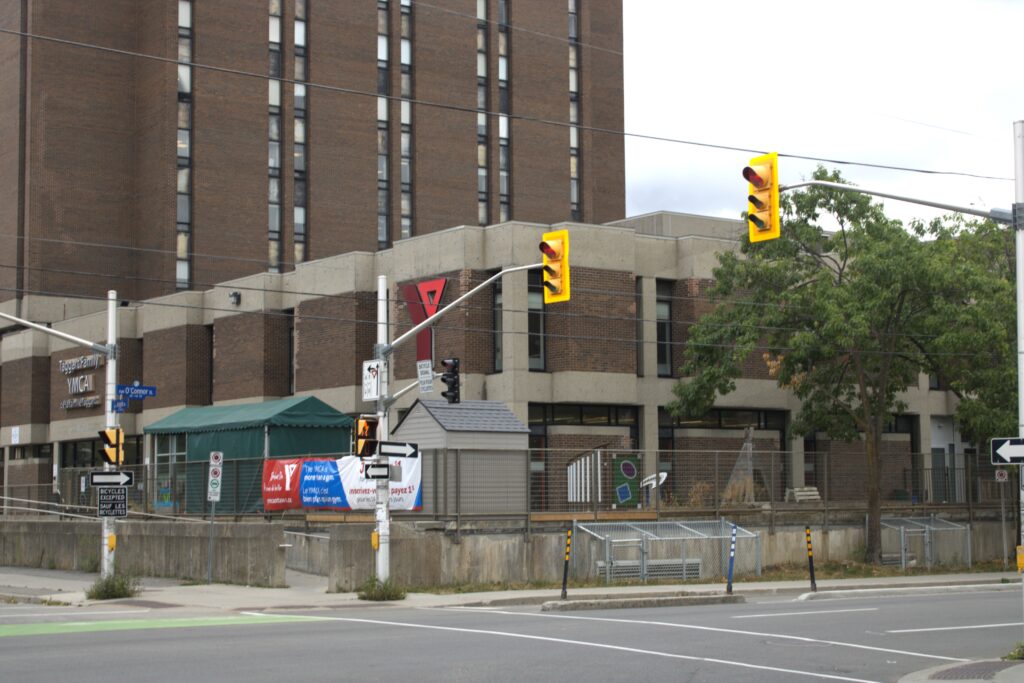
The Ottawa Auditorium was located at the corner of O’Connor Street and Argyle Avenue. It was demolished in 1967.
Sources:
Coleman, Charles. The Trail of the Stanley Cup. 3 vols. Montreal: National Hockey League, 1966-1977.
Kitchen, Paul. Dey Brothers’ Rinks Were Home to the Senators. Ottawa: Historical Society of Ottawa, 1993.
Kitchen, Paul. Win, Tie, Or Wrangle: The Inside Story of the Old Ottawa Senators, 1883-1935. Manotick: Penumbra Press, 2008.
“On the Side”, The Ottawa Citizen, 11 January 1905, page 8.
“A New Rink: The Rideau Skating and Curling Club Building”. The Ottawa Journal, 13 Oct 1888, page 1.
